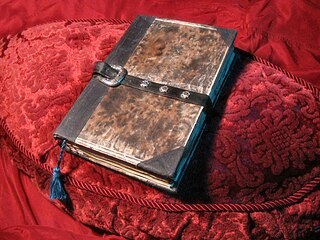Glaaki is a fictional character in the Cthulhu Mythos. Glaaki first appeared in "The Inhabitant of the Lake" (1964), an early story by Ramsey Campbell. Recently this being featured in Campbell's The Last Revelation of Gla'aki (2013).

Azathoth is a deity in the Cthulhu Mythos and Dream Cycle stories of writer H. P. Lovecraft and other authors. He is the ruler of the Outer Gods.
Yog-Sothoth is a cosmic entity in the Cthulhu Mythos and Dream Cycle of American horror writer H. P. Lovecraft. Yog-Sothoth's name was first mentioned in Lovecraft's novel The Case of Charles Dexter Ward. The being is said to take the form of a conglomeration of glowing spheres. It is an all-knowing deity, which means it knows the past, present, and future.
Cthylla is a fictional character in the Cthulhu Mythos of H. P. Lovecraft. Cthylla was created by Brian Lumley, who originally mentioned her in his Titus Crow novel The Transition Of Titus Crow (1975), though he never actually described her. Tina L. Jens, however, depicted Cthylla as a gigantic winged-octopus in her short story "In His Daughter's Darkling Womb" (1997).
Yuggoth is a fictional planet in the Cthulhu Mythos of H. P. Lovecraft. It is deemed to be located at the very edge of the Solar System.

The Elder Things are fictional extraterrestrials in the Cthulhu Mythos. The beings first appeared in H. P. Lovecraft's novella, At the Mountains of Madness, and later appeared, although not named, in the short story "The Dreams in the Witch-House" (1933). Additional references to the Elder Things appear in Lovecraft's short story "The Shadow Out of Time" (1936).
Carcosa is a fictional city in Ambrose Bierce's short story "An Inhabitant of Carcosa" (1886). The ancient and mysterious city is barely described and is viewed only in hindsight by a character who once lived there. Its name may be derived from the medieval city of Carcassonne in southern France, whose Latin name was "Carcaso."
Cyäegha is a deity in the Cthulhu Mythos and first appeared in Eddy C. Bertin's short story "Darkness, My name Is" (1976).
Y'golonac is a fictional deity in the Cthulhu Mythos. He is the creation of Ramsey Campbell and first appeared in his short story "Cold Print" (1969).

Many fictional works of arcane literature appear in H.P. Lovecraft's cycle of interconnected works often known as the Cthulhu Mythos. The main literary purpose of these works is to explain how characters within the tales come by occult or esoterica. However, in some cases the works themselves serve as an important plot device. Thus, in Robert Bloch's tale "The Shambler from the Stars", a weird fiction writer seals his doom by casting a spell from the arcane book De Vermis Mysteriis.
The Lloigor are a fictional race in the Cthulhu Mythos. The beings first appeared in August Derleth and Mark Schorer's short story "The Lair of the Star Spawn" (1932), and have been used in subsequent fictional works by others though often departing from the original concept.
The following tables and lists feature elements of the Cthulhu Mythos, that are often shared between works within that fictional setting.
A number of supernatural characters appear in the Cthulhu Mythos. While many of these beings have godlike qualities, they do not fit the standard categories. Nonetheless, they are noteworthy for their infrequent or sometimes singular appearances in the mythos.
The Severn Valley is the setting of several fictional towns and other locations created by horror writer Ramsey Campbell. Part of the Cthulhu Mythos started by H. P. Lovecraft, the fictional milieu is arguably the most detailed mythos setting outside of Lovecraft Country itself.
The Ramsey Campbell deities are fictional supernatural entities created for the Cthulhu Mythos universe of shared fiction by British horror writer Ramsey Campbell.
The Lin Carter deities are supernatural entities created for the Cthulhu Mythos universe of shared fiction by horror writer Lin Carter.
"I, Cthulhu" is a short humorous story by fantasy author Neil Gaiman featuring H. P. Lovecraft's Cthulhu who is dictating an autobiography to a human slave, Whateley. The story reveals much about Cthulhu's 'birth' and early life.
Serpent Men are a fictional race created by Robert E. Howard for his King Kull tales. They first appeared in "The Shadow Kingdom," published in Weird Tales in August 1929.
H. P. Lovecraft created a number of deities throughout the course of his literary career, including the "Great Old Ones" and aliens, such as the "Elder Things", with sporadic references to other miscellaneous deities whereas the "Elder Gods" are a later creation of other prolific writers such as August Derleth, who was credited with formalizing the Cthulhu Mythos.


